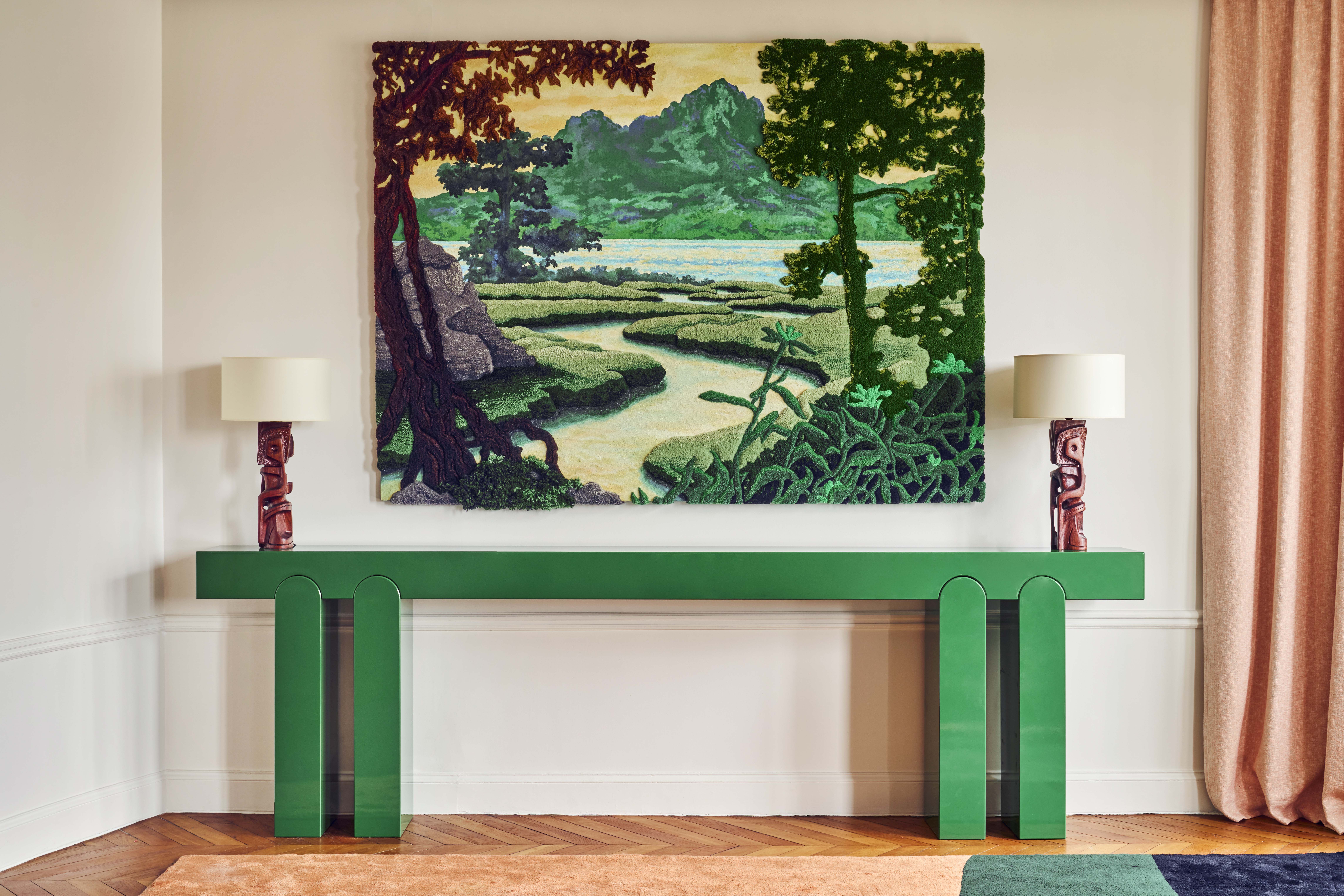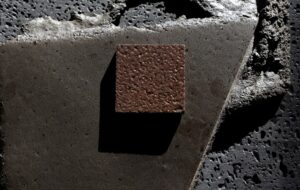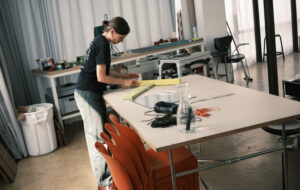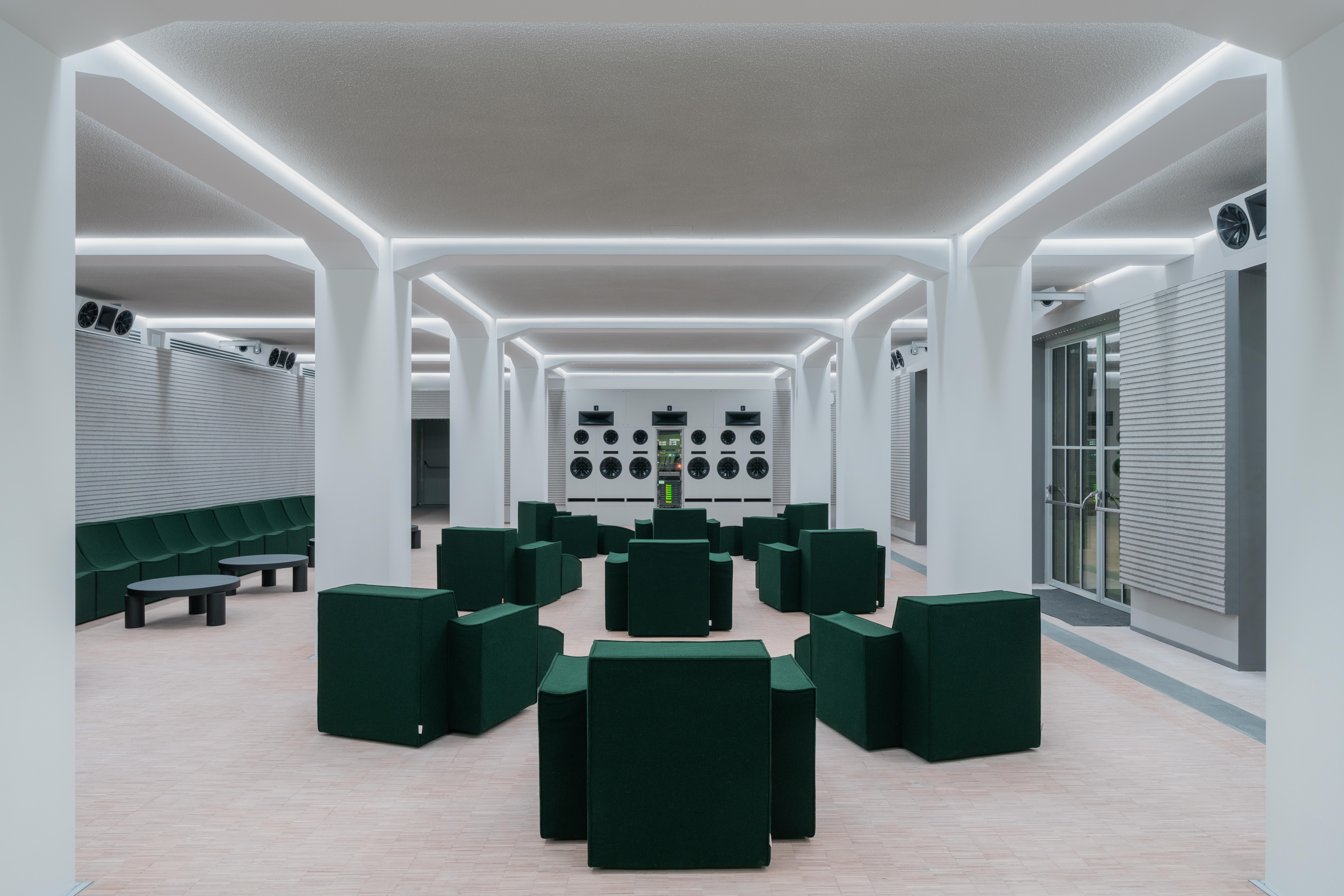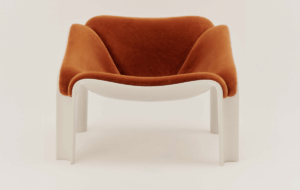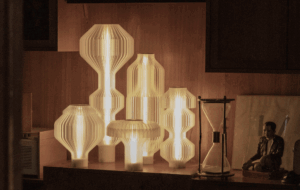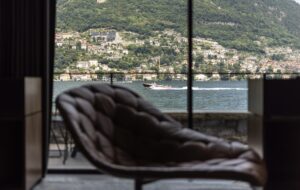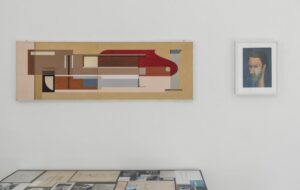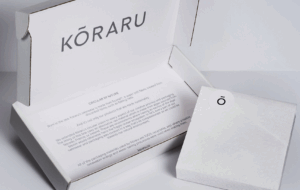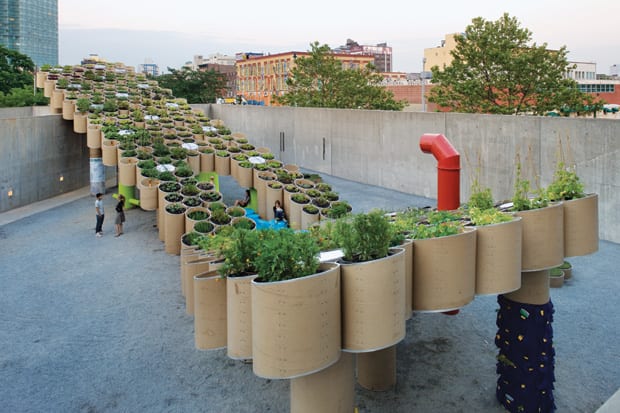
words Beatrice Galilee
“We’ve got lots of beans… purple beans, green beans. All sorts of beans,” says Dan Wood, proudly listing the virulent produce of Work AC’s Urban Farm installation for New York arts venue PS1. “There are radishes up there, lettuce, spinach, five different types of tomatoes. The potato vines are coming along nicely too.”
The New York-based architects wanted to do something different for the annual courtyard pavilion, which is America’s foremost showcase for young architects Ð previous designers include Ball Nogues, SHoP and Xefirotarch.
“Since its inception we’ve seen a lot of formal experimentation but no questioning of the programme,” says Work co-founder Amale Andraos. “We wanted to challenge ourselves.”
The installation is growing 50 types of vegetables in 280 cardboard tubes filled with soil.
The tubes are watered by an irrigation system that makes use of collected rainwater and heated by 16 solar panels. There’s enough surplus power to run a mobile-phone charging station and a sound and video column. A periscope at one end gives people on the ground a look over the growing plants, which are lifted 12m in the air.
Work AC runs an ecology and urbanism unit at Princeton University, and worked with an urban farm in Queens to highlight how far food has to travel before it is eaten. “In the US there is on average 3000 miles between farm and plate,” says Wood. “We wanted to reduce that to 100 metres.”
The food isn’t going to waste, with much of it being put to good use in the PS1 restaurant.


